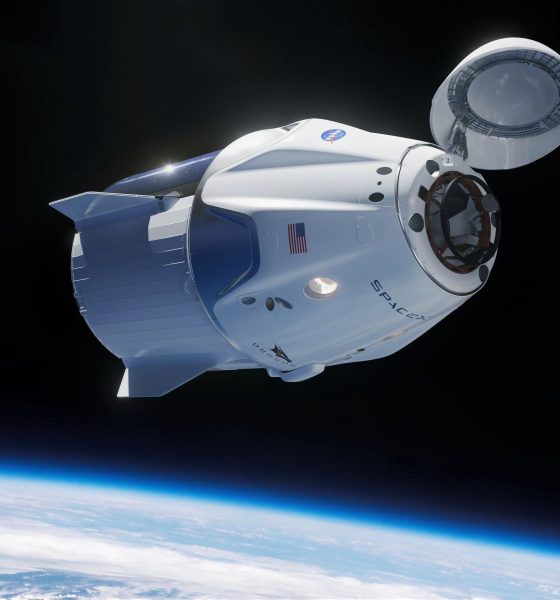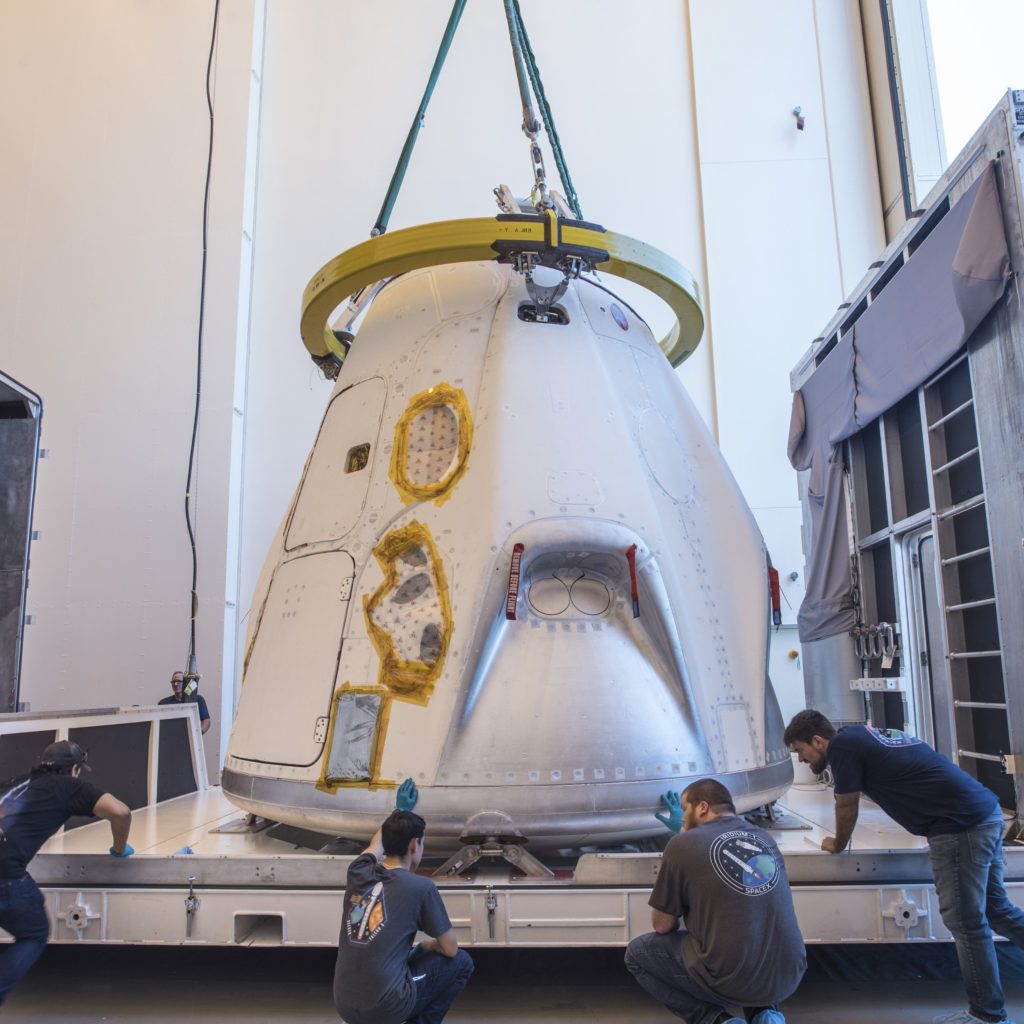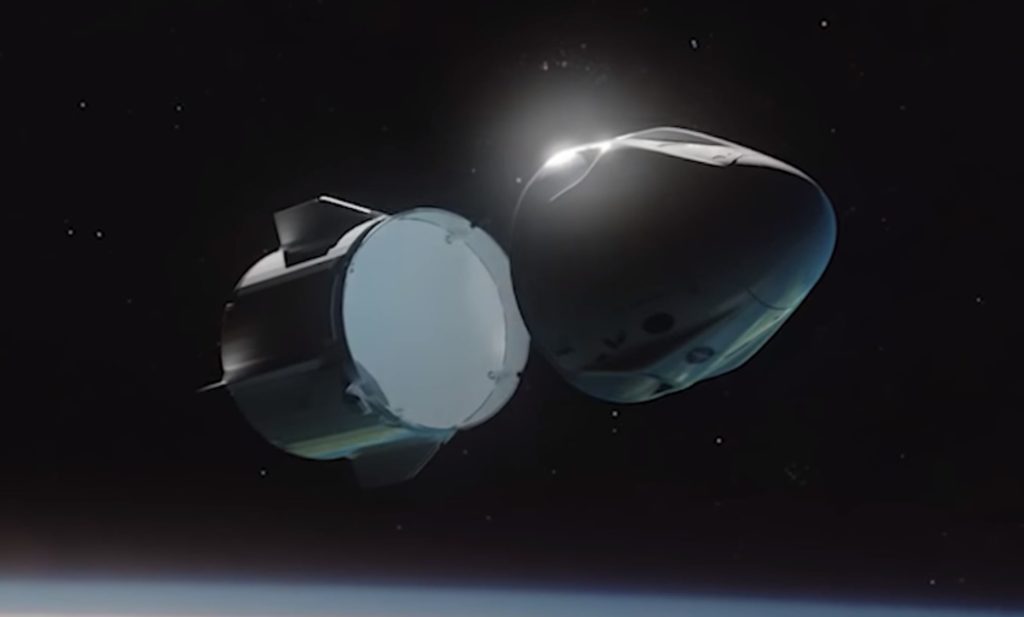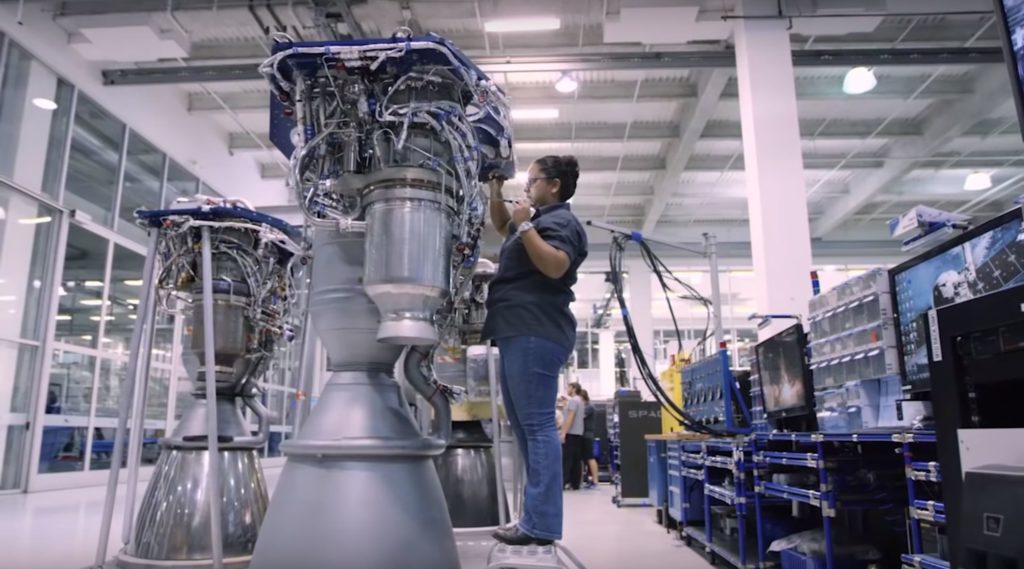

News
SpaceX’s 2018 Crew Dragon launch debut imminent as spacecraft hardware comes together
SpaceX’s first spaceworthy Crew Dragon spacecraft officially has a confident launch target in hand as a flood of activity has begun to complete, ship, test, and deliver multiple critical components ranging from the Dragon capsule itself to the Falcon 9 Block 5 first and second stages for that capsule’s November or December launch debut.
As of today, SpaceX has between three and four months to finish up a significant – but by no means impossible – amount of work, ranging from actual hardware completion, integration, and preflight checkouts and testing to a veritable flood of paperwork required by NASA before any Commercial Crew launch can proceed.
Watch live as @NASA announces the astronauts assigned to fly aboard Crew Dragon and launch from American soil for the first time since the final Space Shuttle mission in 2011 → https://t.co/rdhLIxFGwa pic.twitter.com/Y640lpu13G
— SpaceX (@SpaceX) August 3, 2018
Paper beats rock(et)
In fact, given comments from SpaceX’s President and COO Gwynne Shotwell and CEO Elon Musk, the executives appeared to be very confident that the hardware for the first uncrewed demo mission (DM-1) and second crewed test flight (DM-2) would be ready for launch. These comments most likely group software under that hardware umbrella, meaning that Shotwell and Musk seem to be very subtly commenting on the immense bureaucratic workload required from SpaceX before NASA will permit them to launch.
Decades of experience as a military-industrial complex stalwart has readily prepared Boeing to deal with those vast ‘certification’ workloads, but that certainly doesn’t mean that NASA couldn’t find a more pragmatic and less oppressive balance between carelessness and a downright obsessive compulsion to document every molecule of their commercial providers’ hardware, software, and wetware (employees, management, organizational structure).
- The first spaceworthy Crew Dragon capsule is already in Florida, preparing for its November 2018 launch debut. The same capsule will be refurbished and reflown as few as three months after recovery. (SpaceX)
- Crew Dragon approaches the International Space Station in this render. (SpaceX)
- Crew Dragon separates from its trunk segment. (SpaceX)
Falcon 9 preps for Crew Dragon
Despite the often-onerous bureaucratic demands of NASA’s Commercial Crew Program office, SpaceX is moving rapidly ahead with a range of hardware, all critical for the Crew Dragon’s November/December launch debut. With the capsule itself already in Florida and the DM-1 Dragon’s trunk nearing shipment from Hawthorne to Cape Canaveral (currently NET September), the next and perhaps most important piece is Falcon 9 itself.
Confirmed earlier this year in a quarterly NASA Commercial Crew update, SpaceX assigned Falcon 9 Booster 1051 to Crew Dragon’s debut launch. That rocket booster and its complementary upper stage are already at SpaceX’s McGregor, TX rocket testing facility undergoing a number of acceptance tests and checkouts as of today, confirming a number of critical facts. Most importantly, the presence of integrated the B1051 booster in Texas appears to imply that SpaceX has successfully fixed slight design flaws in their Merlin 1D engines and composite-overwrapped pressure vessels (COPVs), even if the paperwork to officially ‘certify’ them for flight has not been completed.
- Fresh Block 5 Merlin 1D engines are built and assembled in Hawthorne, CA before heading to Texas for testing. (SpaceX)
- A SpaceX technician documents the condition of Falcon 9 B1048’s Block 5 Merlin engines, 08/01/18. (Pauline Acalin)
- Falcon 9 shows off some of its COPVs in a tour of SpaceX’s Hawthorne factory. (SpaceX)
This meshes nicely with details provided in a recent NASA Commercial Crew news post, which stated that “Falcon 9’s first and second stages for the Demo-1 [Crew Dragon] mission are targeted to ship … [to] McGregor, Texas for additional testing in August.” Ship they did and the booster may well have beaten that “August” timeframe according to photos of the facility from mid-July. When exactly that testing will wrap up in Texas is unclear but it would be reasonable to expect the rocket booster and upper stage to ship to SpaceX’s Launch Complex 39A (LC-39A) in Cape Canaveral within 4-6 weeks, giving the company a solid month and a half to integrate the rocket, static fire it at the pad, complete assembly of Crew Dragon, and attach the spacecraft to its Falcon 9 rocket ahead of launch.
For prompt updates, on-the-ground perspectives, and unique glimpses of SpaceX’s rocket recovery fleet (including fairing catcher Mr Steven) check out our brand new LaunchPad and LandingZone newsletters!

Elon Musk
Elon Musk and Tesla AI Director share insights after empty driver seat Robotaxi rides
The executives’ unoccupied tests hint at the rapid progress of Tesla’s unsupervised Robotaxi efforts.

Tesla CEO Elon Musk and AI Director Ashok Elluswamy celebrated Christmas Eve by sharing personal experiences with Robotaxi vehicles that had no safety monitor or occupant in the driver’s seat. Musk described the system’s “perfect driving” around Austin, while Elluswamy posted video from the back seat, calling it “an amazing experience.”
The executives’ unoccupied tests hint at the rapid progress of Tesla’s unsupervised Robotaxi efforts.
Elon and Ashok’s firsthand Robotaxi insights
Prior to Musk and the Tesla AI Director’s posts, sightings of unmanned Teslas navigating public roads were widely shared on social media. One such vehicle was spotted in Austin, Texas, which Elon Musk acknowleged by stating that “Testing is underway with no occupants in the car.”
Based on his Christmas Eve post, Musk seemed to have tested an unmanned Tesla himself. “A Tesla with no safety monitor in the car and me sitting in the passenger seat took me all around Austin on Sunday with perfect driving,” Musk wrote in his post.
Elluswamy responded with a 2-minute video showing himself in the rear of an unmanned Tesla. The video featured the vehicle’s empty front seats, as well as its smooth handling through real-world traffic. He captioned his video with the words, “It’s an amazing experience!”
Towards Unsupervised operations
During an xAI Hackathon earlier this month, Elon Musk mentioned that Tesla owed be removing Safety Monitors from its Robotaxis in Austin in just three weeks. “Unsupervised is pretty much solved at this point. So there will be Tesla Robotaxis operating in Austin with no one in them. Not even anyone in the passenger seat in about three weeks,” he said. Musk echoed similar estimates at the 2025 Annual Shareholder Meeting and the Q3 2025 earnings call.
Considering the insights that were posted Musk and Elluswamy, it does appear that Tesla is working hard towards operating its Robotaxis with no safety monitors. This is quite impressive considering that the service was launched just earlier this year.
Elon Musk
Starlink passes 9 million active customers just weeks after hitting 8 million
The milestone highlights the accelerating growth of Starlink, which has now been adding over 20,000 new users per day.

SpaceX’s Starlink satellite internet service has continued its rapid global expansion, surpassing 9 million active customers just weeks after crossing the 8 million mark.
The milestone highlights the accelerating growth of Starlink, which has now been adding over 20,000 new users per day.
9 million customers
In a post on X, SpaceX stated that Starlink now serves over 9 million active users across 155 countries, territories, and markets. The company reached 8 million customers in early November, meaning it added roughly 1 million subscribers in under seven weeks, or about 21,275 new users on average per day.
“Starlink is connecting more than 9M active customers with high-speed internet across 155 countries, territories, and many other markets,” Starlink wrote in a post on its official X account. SpaceX President Gwynne Shotwell also celebrated the milestone on X. “A huge thank you to all of our customers and congrats to the Starlink team for such an incredible product,” she wrote.
That growth rate reflects both rising demand for broadband in underserved regions and Starlink’s expanding satellite constellation, which now includes more than 9,000 low-Earth-orbit satellites designed to deliver high-speed, low-latency internet worldwide.
Starlink’s momentum
Starlink’s momentum has been building up. SpaceX reported 4.6 million Starlink customers in December 2024, followed by 7 million by August 2025, and 8 million customers in November. Independent data also suggests Starlink usage is rising sharply, with Cloudflare reporting that global web traffic from Starlink users more than doubled in 2025, as noted in an Insider report.
Starlink’s momentum is increasingly tied to SpaceX’s broader financial outlook. Elon Musk has said the satellite network is “by far” the company’s largest revenue driver, and reports suggest SpaceX may be positioning itself for an initial public offering as soon as next year, with valuations estimated as high as $1.5 trillion. Musk has also suggested in the past that Starlink could have its own IPO in the future.
News
NVIDIA Director of Robotics: Tesla FSD v14 is the first AI to pass the “Physical Turing Test”
After testing FSD v14, Fan stated that his experience with FSD felt magical at first, but it soon started to feel like a routine.

NVIDIA Director of Robotics Jim Fan has praised Tesla’s Full Self-Driving (Supervised) v14 as the first AI to pass what he described as a “Physical Turing Test.”
After testing FSD v14, Fan stated that his experience with FSD felt magical at first, but it soon started to feel like a routine. And just like smartphones today, removing it now would “actively hurt.”
Jim Fan’s hands-on FSD v14 impressions
Fan, a leading researcher in embodied AI who is currently solving Physical AI at NVIDIA and spearheading the company’s Project GR00T initiative, noted that he actually was late to the Tesla game. He was, however, one of the first to try out FSD v14.
“I was very late to own a Tesla but among the earliest to try out FSD v14. It’s perhaps the first time I experience an AI that passes the Physical Turing Test: after a long day at work, you press a button, lay back, and couldn’t tell if a neural net or a human drove you home,” Fan wrote in a post on X.
Fan added: “Despite knowing exactly how robot learning works, I still find it magical watching the steering wheel turn by itself. First it feels surreal, next it becomes routine. Then, like the smartphone, taking it away actively hurts. This is how humanity gets rewired and glued to god-like technologies.”
The Physical Turing Test
The original Turing Test was conceived by Alan Turing in 1950, and it was aimed at determining if a machine could exhibit behavior that is equivalent to or indistinguishable from a human. By focusing on text-based conversations, the original Turing Test set a high bar for natural language processing and machine learning.
This test has been passed by today’s large language models. However, the capability to converse in a humanlike manner is a completely different challenge from performing real-world problem-solving or physical interactions. Thus, Fan introduced the Physical Turing Test, which challenges AI systems to demonstrate intelligence through physical actions.
Based on Fan’s comments, Tesla has demonstrated these intelligent physical actions with FSD v14. Elon Musk agreed with the NVIDIA executive, stating in a post on X that with FSD v14, “you can sense the sentience maturing.” Musk also praised Tesla AI, calling it the best “real-world AI” today.














